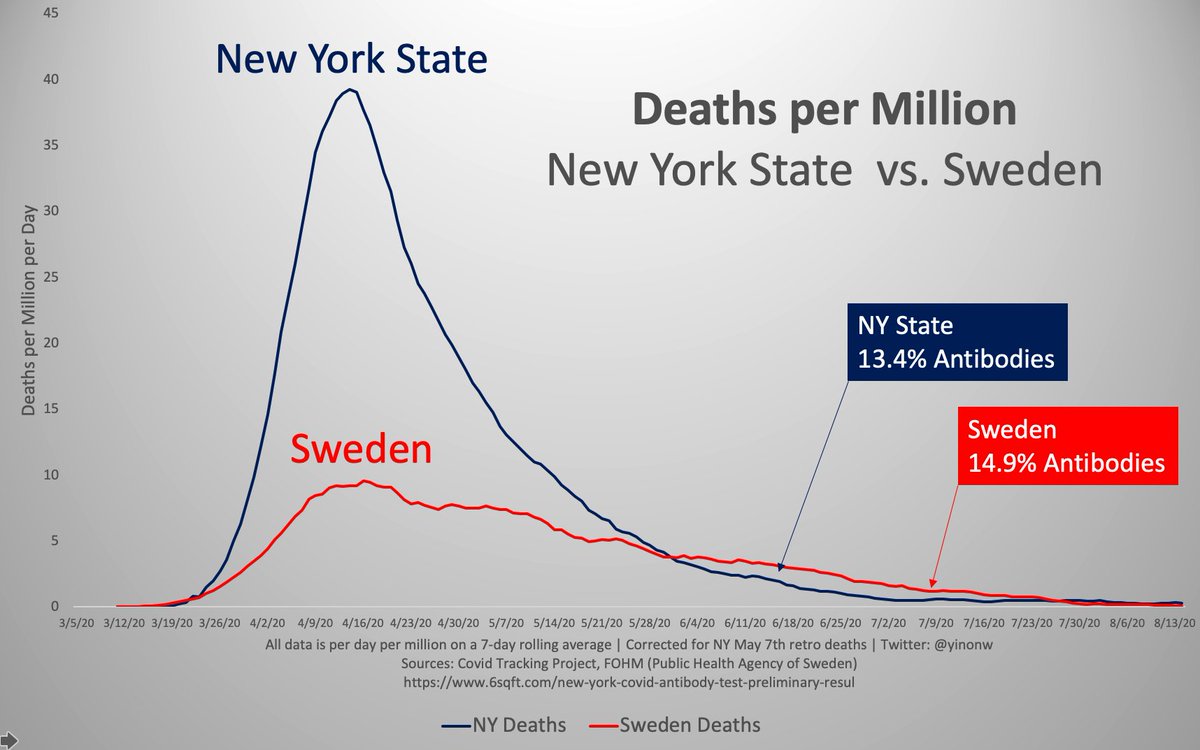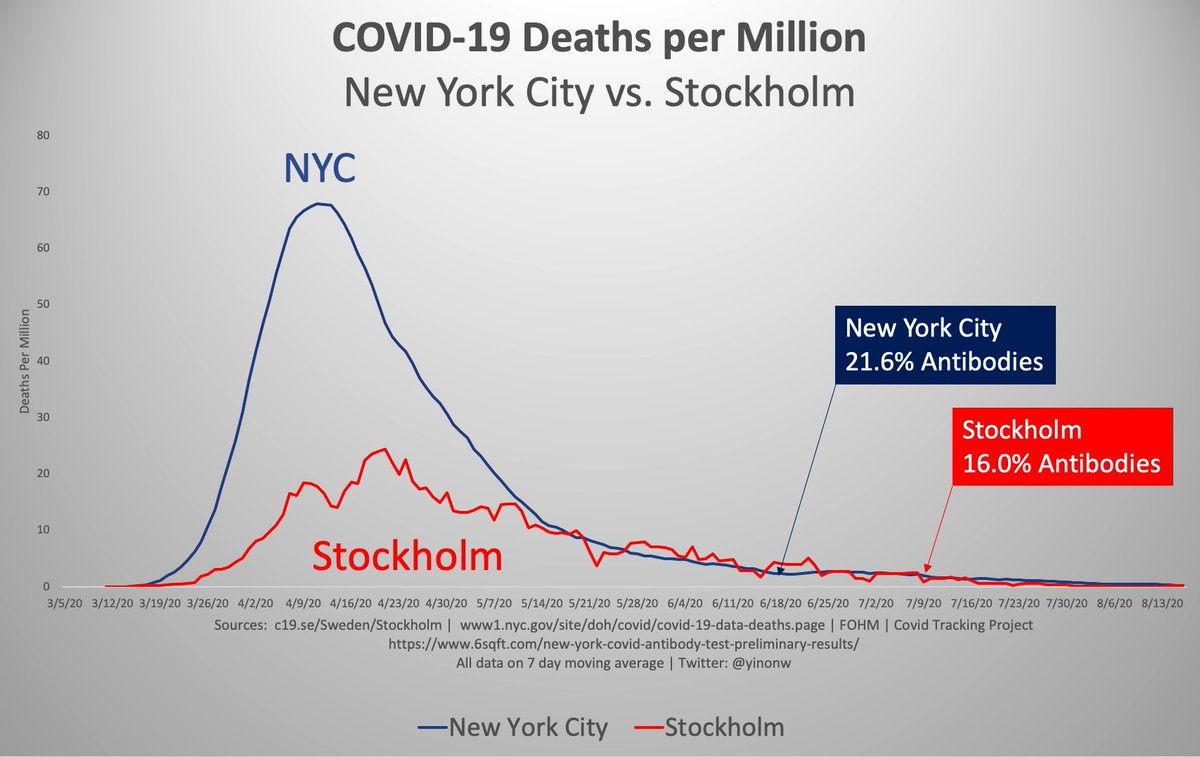A short thread about covid herd immunity. First let's look at New York & Sweden. NY wears masks, closed business, closed schools, and mandates social distancing. Sweden did not but both reached near zero deaths at the same time. Only thing in common is similar antibody levels.

We can also compare their capitals, NYC and Stockholm. Both are down to near zero deaths despite Stockholm staying completely open the entire year. The only thing they did was ban large events. What's in common? ~15-20% Covid antibody expression.

This is typically when people bring up population density, so let's remind ourselves that Stockholm has twice the population density of New York State but far fewer deaths. And Stockholm never locked down. But that's really unrelated. Let's get back to herd immunity.

A test in Northern Italy showed the population was at 13-14% antibody levels in April, as the country was well on the way down in cases and deaths.
francetvinfo.fr/sante/maladie/…
Similarly, Germany's coronavirus "epicenter", Gangelt in Heinsberg, showed they peaked out at around 15% antibody levels.
land.nrw/sites/default/…
Outside of NYC's 22%, the highest known antibody levels recorded that I have found in a natural community (not prisons) was in a particularly bad hot spot in Iran (Guilan), which came in at 21%.
medrxiv.org/content/10.110…
Whether one looks at Northern Italy, NYC, or any other of the worst outbreaks in the world, no meaningful community has gotten over 25% antibody levels. This is regardless of the lock down measures taken or not taken. Masks worn or not worn. Schools open or closed.
In fact, the only thing that all places now at near zero deaths have in common is that they have reached antibody levels of approximately 15-20%, despite wildly different intervention policies.
But what about the 60% herd immunity number? That is only true if one plans for a vaccine herd immunity approach, where those vaccinated are essentially random. This is because the 60% approximation assumes a homogeneous population. But of course the population is not.
Different people have different levels of susceptibility. So if left to spread in the wild, more susceptible people get the virus first and it becomes increasingly harder to spread. 15% antibody levels are not a random 15% This is explained in this study:
medrxiv.org/content/10.110…
And this study models heterogeneous herd immunity effects across real world covid data:
medrxiv.org/content/10.110…
So why do some prisons get to above 20%? If exposed to a massive amount of a viral load through unnatural conditions (prisons, hospitals, etc.) then even those ordinarily not susceptible may go on to produce antibodies due to a massive dose of exposure.
This is not to say that only 15-20% were exposed to covid. It says only 15-20% express antibodies, because many are able to kill coronaivrus before their body even needs antibodies. See study here from Science:
science.sciencemag.org/content/early/…
And remember that Diamond Princess Cruise Ship that was so heavily studied? They also reached 20% antibody levels.
nature.com/articles/d4158…
So let's review: * No matter the intervention policy, hot spots decline when reaching ~15% antibody expression * Given a sufficiently large sample size, all hot spots stopped at 20-25% * Masks, businesses, schools, etc. all fail to explain it
If it wasn't for Sweden, people could say the 15-20% is just a universal coincidence, and that it's the government's intervention which saved the day. The problem though is that Sweden does exist. And it blows that theory out of the water.
This doesn't mean some interventions can't help. But we simply cannot ignore the fact that Sweden never shut down, never closed schools, never wore masks, and reach the same results as those who did.

